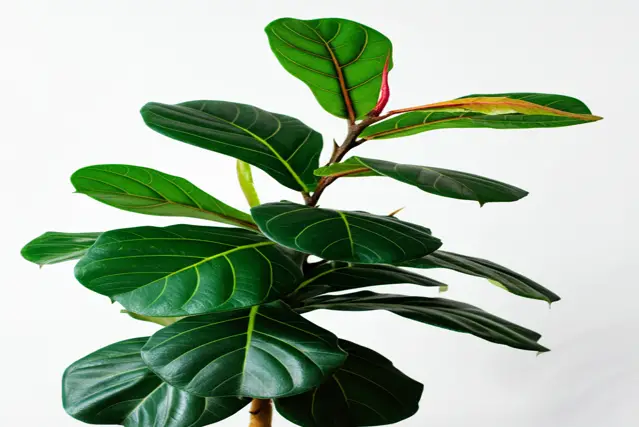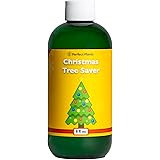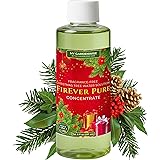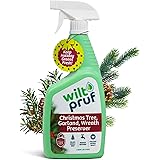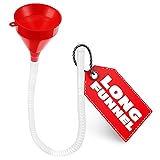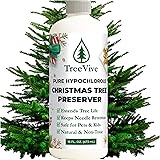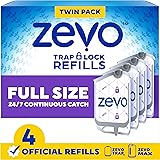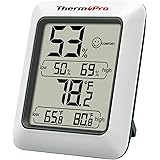The Fiddle Leaf Fig (Ficus lyrata) is a statement plant, prized for its large, violin-shaped leaves and striking presence. But maintaining that “wow” factor means more than just watering and fertilizing. Dust, grime, and hard water spots can dull those gorgeous leaves, hindering photosynthesis and making your fig look less than its best. Luckily, restoring that signature gloss is easier than you think!
This comprehensive guide will walk you through everything you need to know about cleaning your Fiddle Leaf Fig, from choosing the right tools to tackling common problems. We’ll cover current best practices, preventative measures, and even troubleshooting techniques to ensure your plant stays healthy, vibrant, and the envy of all your houseplant-loving friends.
Why Cleaning Your Fiddle Leaf Fig Matters
Before we dive into the “how,” let’s understand the “why.” Cleaning your Fiddle Leaf Fig isn’t just about aesthetics; it’s vital for its health and longevity. Here’s a breakdown:
Improved Photosynthesis
Dust and grime act as a barrier, blocking sunlight from reaching the chlorophyll in the leaves. Chlorophyll is essential for photosynthesis, the process by which plants convert light energy into food. A layer of dust can significantly reduce the efficiency of photosynthesis, weakening the plant and slowing its growth. Studies have shown that even a thin layer of dust can reduce photosynthesis rates by up to 30%.
Prevention of Pests and Diseases
Dusty leaves create a more hospitable environment for pests like spider mites, mealybugs, and scale. These pests thrive in dry, dusty conditions and can quickly infest a weakened plant. Cleaning your leaves regularly helps to remove these pests before they can establish themselves and cause significant damage. Additionally, cleaning can help remove fungal spores that can lead to leaf spot and other diseases.
Enhanced Aesthetics and Overall Health
Let’s face it, a clean, glossy Fiddle Leaf Fig is simply more attractive! The vibrant green color and healthy sheen of the leaves enhance the plant’s overall appeal and make it a focal point in any room. Beyond aesthetics, cleaning removes debris that can harbor bacteria or fungi, contributing to the plant’s overall well-being. A healthy plant is more resistant to stress and disease.

fiddle leaf fig leaf shine
Understanding the Latest Trends in Plant Care
The popularity of houseplants has surged in recent years, driven by factors like increased urbanization and a desire to connect with nature indoors. This has led to a greater focus on plant care, with trends like:
- Sustainable Plant Care: Using eco-friendly cleaning products and methods.
- Preventative Care: Focusing on proactive measures to keep plants healthy, rather than just treating problems after they arise. Cleaning is a key part of this.
- Plant Parenting Communities: Online forums and social media groups dedicated to sharing plant care tips and advice. These communities are a great resource for learning about the latest best practices.
- Specialized Plant Products: The market for plant-specific cleaning solutions and tools is growing, reflecting a demand for effective and gentle ways to care for houseplants.
According to a 2023 report by the National Gardening Association, indoor plant ownership has increased by nearly 50% since 2019, with millennials and Gen Z leading the trend. This increased interest has fueled a demand for information and resources on proper plant care, including effective cleaning methods.
Tools and Supplies You’ll Need
Before you begin, gather your supplies. Having everything on hand will make the process smoother and more efficient.
- Soft Cloths: Microfiber cloths are ideal because they’re gentle on leaves and effectively trap dust and dirt. Avoid using rough cloths or paper towels, as these can scratch or damage the delicate foliage.
- Spray Bottle: For misting leaves with water or cleaning solutions. Choose a bottle with an adjustable nozzle to control the spray pattern.
- Water: Use lukewarm, filtered water whenever possible. Tap water can contain minerals and chemicals that can leave spots on the leaves. If you must use tap water, let it sit for 24 hours to allow chlorine to evaporate.
- Mild Soap (Optional): If your plant is heavily soiled or has pest issues, a mild soap solution can be helpful. Castile soap or a gentle dish soap (like those free of dyes and fragrances) diluted in water is a good option. Use sparingly!
- Neem Oil (Optional): For pest control and leaf shine. Neem oil is a natural insecticide and fungicide that can also add a healthy sheen to your leaves.
- Leaf Shine Products (Optional): While not strictly necessary, commercial leaf shine products can enhance the gloss of your Fiddle Leaf Fig’s leaves. However, use these sparingly, as some products can clog pores and hinder photosynthesis. Look for plant-safe, non-toxic options.
- Small Soft Brush (Optional): A small paintbrush or soft-bristled brush can be helpful for reaching tight spaces and removing dust from textured leaves.
- Gloves (Optional): If you have sensitive skin or are using a cleaning solution, gloves can protect your hands.
- Support (Optional): If your plant is tall and top-heavy, you may need a support like a stake or trellis to prevent it from tipping over while you’re cleaning it.
Step-by-Step Guide to Cleaning Your Fiddle Leaf Fig
Here’s a detailed guide to cleaning your Fiddle Leaf Fig, broken down into easy-to-follow steps:
Step 1: Prepare Your Work Area
Choose a well-lit area with good ventilation. Protect the surface beneath your plant with a towel or sheet to catch any drips or spills. If your plant is very large, you may need to move it to a more spacious location, such as a bathroom or outdoor patio (weather permitting).
Step 2: Remove Loose Debris
Before you start cleaning the leaves, remove any loose debris from the soil surface, such as fallen leaves, twigs, or dead insects. This will prevent these materials from contaminating the leaves during the cleaning process.
Step 3: Dust the Leaves
This is the most crucial step. Gently wipe each leaf with a soft, dry microfiber cloth. Start at the base of the leaf and wipe towards the tip, using a gentle sweeping motion. Be sure to clean both the upper and lower surfaces of each leaf. For larger leaves, you can fold the cloth into a smaller square to provide a cleaner surface as you work. Use the small brush to reach any crevices or textured areas.
Real-World Example: Imagine your Fiddle Leaf Fig is placed near a window. Over time, dust accumulates on the leaves. Not only does this dull the leaves, but it also blocks sunlight. By regularly dusting the leaves, you’re helping your plant absorb more light and thrive.
Step 4: Wash the Leaves (Optional)
If dusting alone isn’t enough to remove all the dirt and grime, you can wash the leaves with a damp cloth. Prepare a solution of lukewarm, filtered water and a few drops of mild soap (if needed). Dip the cloth into the solution, wring out the excess water, and gently wipe each leaf. Be sure to rinse the cloth frequently to remove any accumulated dirt. After washing, wipe the leaves with a clean, dry cloth to remove any soap residue.
Important Considerations for Washing:
- Avoid Over-Wetting: Too much moisture can lead to fungal problems. Make sure to wring out the cloth thoroughly before wiping the leaves.
- Test a Small Area First: Before washing all the leaves, test the solution on a small, inconspicuous area to ensure it doesn’t damage the foliage.
- Avoid Harsh Chemicals: Never use harsh chemicals or abrasive cleaners on your Fiddle Leaf Fig leaves. These can damage the delicate tissue and cause discoloration or even death.
Step 5: Apply Neem Oil (Optional)
If you’re using neem oil for pest control or leaf shine, dilute it according to the manufacturer’s instructions. Pour the diluted neem oil into a spray bottle and lightly mist the leaves. Be sure to coat both the upper and lower surfaces of each leaf. Allow the neem oil to dry completely before touching the leaves.
Neem Oil Application Tips:
- Apply in the Evening: Neem oil can make leaves more sensitive to sunlight, so it’s best to apply it in the evening.
- Avoid Over-Application: Too much neem oil can clog pores and hinder photosynthesis. Use a light mist and avoid allowing the oil to drip.
- Reapply Regularly: For pest control, reapply neem oil every 7-14 days, or as needed.
Step 6: Apply Leaf Shine (Optional)
If you’re using a commercial leaf shine product, follow the manufacturer’s instructions. In general, you’ll want to apply a light mist of the product to the leaves, holding the can or bottle several inches away from the plant. Avoid over-applying the product, as this can create a greasy or unnatural look. Wipe off any excess product with a clean cloth.
Leaf Shine Considerations:
- Choose Plant-Safe Products: Make sure the leaf shine product is specifically designed for use on houseplants and is non-toxic.
- Use Sparingly: Overuse of leaf shine products can clog pores and hinder photosynthesis. Use them sparingly and only when needed.
- Consider Alternatives: Instead of using commercial leaf shine products, consider using natural alternatives like neem oil or a diluted mixture of milk and water.
Step 7: Inspect Your Plant
While you’re cleaning your Fiddle Leaf Fig, take the opportunity to inspect it for any signs of pests, diseases, or other problems. Look for:
- Pests: Check for spider mites, mealybugs, scale, aphids, or other pests on the leaves, stems, and soil surface.
- Diseases: Look for leaf spots, yellowing, wilting, or other signs of disease.
- Root Problems: Check the soil for signs of overwatering or root rot, such as soggy soil, foul odor, or stunted growth.
If you notice any problems, take steps to address them immediately. This may involve treating the plant with an appropriate pesticide or fungicide, repotting it into fresh soil, or adjusting your watering schedule.
Step 8: Return Your Plant to Its Original Location
Once you’ve finished cleaning and inspecting your Fiddle Leaf Fig, return it to its original location. Make sure the plant is getting adequate sunlight and that the humidity levels are appropriate. Avoid placing the plant in direct sunlight immediately after cleaning, as this can cause the leaves to burn. Consider wiping down the pot itself to remove any dust or residue.
Frequency of Cleaning: Finding the Right Rhythm
How often you clean your Fiddle Leaf Fig depends on several factors, including the environment in your home and the overall health of your plant. Here’s a general guideline:
- Dusting: Dust the leaves every 1-2 weeks. This is the most important and frequent cleaning task.
- Washing: Wash the leaves every 1-2 months, or as needed. This is especially important if your plant is heavily soiled or has pest issues.
- Neem Oil Application: Apply neem oil every 7-14 days for pest control, or as needed. For leaf shine, apply neem oil every 1-2 months.
- Leaf Shine Application: Apply leaf shine every 1-2 months, or as needed. Use sparingly.
Factors Affecting Cleaning Frequency:
- Dust Levels: If you live in a dusty environment, you may need to clean your plant more frequently.
- Humidity Levels: Low humidity can make leaves more prone to dust accumulation.
- Pest Activity: If your plant is prone to pest infestations, you may need to clean it more frequently to remove pests and their eggs.
- Plant Health: A healthy plant is better able to tolerate cleaning and will benefit from more frequent attention.
Dealing with Specific Cleaning Challenges
Sometimes, cleaning your Fiddle Leaf Fig can present unique challenges. Here’s how to address some common problems:
Hard Water Spots
Hard water contains minerals like calcium and magnesium, which can leave unsightly spots on your plant’s leaves. To remove hard water spots:
- Use Filtered Water: Water your plant with filtered water to prevent hard water spots from forming in the first place.
- Wipe with Vinegar Solution: Prepare a solution of equal parts white vinegar and water. Dip a soft cloth into the solution, wring out the excess water, and gently wipe the affected leaves. Be sure to rinse the leaves with clean water afterward to remove any vinegar residue.
- Citric Acid Solution: A diluted citric acid solution can also help remove hard water spots. Follow the same procedure as with the vinegar solution.
Sticky Residue
Sticky residue on your Fiddle Leaf Fig’s leaves is often a sign of a pest infestation, such as aphids or scale. The sticky substance, called honeydew, is excreted by these pests.
- Identify the Pest: Inspect your plant carefully to identify the source of the sticky residue.
- Treat the Infestation: Use an appropriate pesticide or insecticidal soap to treat the pest infestation.
- Wash the Leaves: Once the pest infestation is under control, wash the leaves with a mild soap solution to remove the sticky residue.
White Spots
White spots on your Fiddle Leaf Fig’s leaves can be caused by several factors, including:
- Powdery Mildew: A fungal disease that causes a white, powdery coating on the leaves.
- Mineral Deposits: Accumulation of minerals from hard water or fertilizer.
- Insect Infestations: Certain insects, such as mealybugs, can leave behind white, cottony masses.
- Identify the Cause: Inspect your plant carefully to determine the cause of the white spots.
- Treat Accordingly: Treat the underlying cause of the white spots. For powdery mildew, use a fungicide. For mineral deposits, wipe the leaves with a vinegar solution. For insect infestations, use an appropriate pesticide or insecticidal soap.
Brown Spots
Brown spots on your Fiddle Leaf Fig’s leaves can be caused by several factors, including:
- Overwatering: Excess moisture can lead to root rot and brown spots on the leaves.
- Underwatering: Insufficient moisture can cause the leaves to dry out and develop brown spots.
- Sunburn: Exposure to direct sunlight can burn the leaves and cause brown spots.
- Fungal or Bacterial Infections: Certain fungal or bacterial infections can cause leaf spots and browning.
- Identify the Cause: Assess your plant’s growing conditions and look for other symptoms to determine the cause of the brown spots.
- Adjust Watering: Adjust your watering schedule to avoid overwatering or underwatering.
- Move to Indirect Light: If the plant is getting too much direct sunlight, move it to a location with indirect light.
- Treat Infections: If the brown spots are caused by a fungal or bacterial infection, use an appropriate fungicide or bactericide.
Torn Leaves
Torn leaves are usually the result of physical damage, such as being bumped or brushed against. While you can’t repair torn leaves, you can prevent further damage by:
- Protecting the Plant: Place the plant in a location where it’s less likely to be bumped or brushed against.
- Providing Support: If the plant is tall and top-heavy, provide support with a stake or trellis to prevent it from tipping over.
- Trimming Damaged Leaves: If a leaf is severely damaged, you can trim it off with clean, sharp scissors. Cut the leaf at the point where it connects to the stem.
Preventative Measures for Maintaining Glossy Leaves
Prevention is always better than cure. Here are some preventative measures to help keep your Fiddle Leaf Fig’s leaves glossy and healthy:
Maintain Proper Humidity
Fiddle Leaf Figs thrive in humid environments. Low humidity can cause the leaves to dry out and become dull. To increase humidity:
- Use a Humidifier: Place a humidifier near your plant to increase the humidity levels in the surrounding air.
- Group Plants Together: Grouping plants together can create a more humid microclimate.
- Place on a Pebble Tray: Fill a tray with pebbles and water, and place the plant on top of the pebbles. As the water evaporates, it will increase the humidity around the plant.
- Mist Regularly: Mist the leaves of your plant with water regularly, especially during dry periods. Use filtered water to avoid hard water spots.
According to a 2024 study published in the “Journal of Horticultural Science,” maintaining a humidity level between 50% and 70% is ideal for Fiddle Leaf Figs. The study showed a significant increase in leaf glossiness and overall plant health when humidity levels were within this range.
Provide Adequate Lighting
Fiddle Leaf Figs need bright, indirect light to thrive. Insufficient light can cause the leaves to become dull and stunted. Place your plant in a location that receives several hours of bright, indirect light each day. Avoid placing the plant in direct sunlight, as this can burn the leaves. If you’re not sure if your plant is getting enough light, you can use a light meter to measure the light levels in its location.
Understanding Light Intensity:
- Bright Indirect Light: Light that is filtered through a curtain or that comes from a north-facing window.
- Direct Sunlight: Unfiltered sunlight that shines directly on the plant.
- Low Light: Light that is insufficient for most plants to thrive.
Water Properly
Proper watering is essential for the health of your Fiddle Leaf Fig. Overwatering can lead to root rot, while underwatering can cause the leaves to dry out and develop brown spots. Water your plant when the top inch of soil feels dry to the touch. Water thoroughly, allowing the excess water to drain out of the bottom of the pot. Avoid letting the plant sit in standing water, as this can lead to root rot.
Tips for Proper Watering:
- Use Well-Draining Soil: Plant your Fiddle Leaf Fig in well-draining soil to prevent overwatering.
- Check Soil Moisture: Before watering, check the soil moisture with your finger or a moisture meter.
- Water Deeply: When watering, water deeply until the water drains out of the bottom of the pot.
- Allow Soil to Dry: Allow the top inch of soil to dry out between waterings.
Fertilize Regularly
Fiddle Leaf Figs need regular fertilization to stay healthy and produce glossy leaves. Fertilize your plant every 4-6 weeks during the growing season (spring and summer) with a balanced liquid fertilizer diluted to half strength. Avoid fertilizing during the dormant season (fall and winter).
Fertilizer Tips:
- Use a Balanced Fertilizer: Choose a fertilizer with a balanced NPK ratio (nitrogen, phosphorus, and potassium).
- Dilute Fertilizer: Dilute the fertilizer to half strength to avoid burning the roots.
- Fertilize During Growing Season: Fertilize your plant every 4-6 weeks during the growing season.
- Avoid Over-Fertilizing: Over-fertilizing can damage the plant. Follow the instructions on the fertilizer label carefully.
Repot as Needed
Fiddle Leaf Figs need to be repotted every 1-2 years, or when they become root-bound. When repotting, choose a pot that is slightly larger than the previous one and use fresh, well-draining soil. Repotting provides the plant with fresh nutrients and allows the roots to expand, promoting healthy growth.
Repotting Tips:
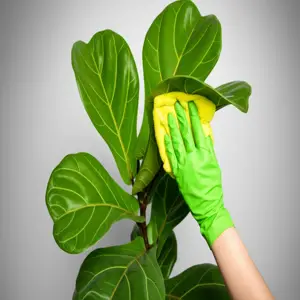
clean ficus lyrata leaves
- Choose the Right Pot: Choose a pot that is slightly larger than the previous one and has drainage holes.
- Use Fresh Soil: Use fresh, well-draining soil when repotting.
- Loosen the Roots: Before repotting, gently loosen the roots of the plant.
- Water Thoroughly: After repotting, water the plant thoroughly.
Monitor for Pests and Diseases
Regularly inspect your Fiddle Leaf Fig for signs of pests and diseases. The sooner you catch a problem, the easier it will be to treat. Look for pests on the leaves, stems, and soil surface. Also, look for signs of disease, such as leaf spots, yellowing, or wilting. If you notice any problems, take steps to address them immediately.
Common Fiddle Leaf Fig Pests:
- Spider Mites: Tiny pests that create webs on the leaves.
- Mealybugs: White, cottony pests that suck sap from the leaves and stems.
- Scale: Small, armored pests that attach to the leaves and stems.
- Aphids: Small, soft-bodied pests that suck sap from the leaves and stems.
Common Fiddle Leaf Fig Diseases:
- Root Rot: A fungal disease that causes the roots to rot.
- Leaf Spot: A fungal or bacterial disease that causes spots on the leaves.
- Powdery Mildew: A fungal disease that causes a white, powdery coating on the leaves.
Understanding Regulations and Best Practices
While cleaning a Fiddle Leaf Fig is primarily a matter of personal plant care, it’s important to be aware of any relevant regulations or best practices, particularly if you’re using pesticides or other chemicals. Here are some key considerations:
Pesticide Regulations
The use of pesticides is regulated by various government agencies, such as the Environmental Protection Agency (EPA) in the United States. These regulations are designed to protect human health and the environment.
- Read Labels Carefully: Always read and follow the instructions on pesticide labels carefully.
- Use Approved Pesticides: Only use pesticides that are approved for use on houseplants.
- Follow Application Guidelines: Follow the application guidelines on the pesticide label carefully.
- Store Pesticides Safely: Store pesticides in a safe place, out of reach of children and pets.
- Dispose of Pesticides Properly: Dispose of pesticides according to local regulations.
Sustainable Practices
As mentioned earlier, sustainable plant care is a growing trend. When cleaning your Fiddle Leaf Fig, consider using eco-friendly products and methods.
- Use Natural Cleaning Solutions: Instead of using harsh chemicals, use natural cleaning solutions like vinegar or mild soap.
- Avoid Single-Use Products: Use reusable cloths and spray bottles instead of single-use products.
- Compost Waste: Compost any plant waste, such as fallen leaves or trimmings.
- Conserve Water: Water your plant efficiently to conserve water.
Ethical Sourcing
When purchasing plant care products, consider supporting companies that are committed to ethical sourcing and sustainable practices. Look for products that are made from recycled materials or that are certified by organizations like the Rainforest Alliance.
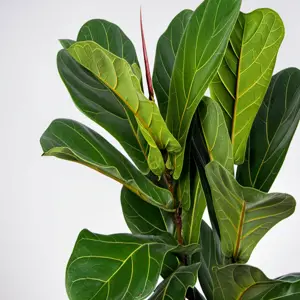
glossy plant foliage
Troubleshooting Common Problems
Even with the best care, problems can sometimes arise. Here’s a quick troubleshooting guide for common Fiddle Leaf Fig issues:
| Problem | Possible Cause | Solution |
|---|---|---|
| Yellowing Leaves | Overwatering, underwatering, nutrient deficiency, pest infestation | Adjust watering schedule, fertilize, treat pests |
| Brown Spots | Overwatering, underwatering, sunburn, fungal infection | Adjust watering schedule, move to indirect light, treat fungal infection |
| Dropping Leaves | Stress, sudden changes in environment, overwatering, underwatering | Maintain stable environment, adjust watering schedule |
| Stunted Growth | Insufficient light, nutrient deficiency, root-bound | Move to brighter location, fertilize, repot |
| Pest Infestation | Dry conditions, weak plant | Increase humidity, clean leaves regularly, treat with pesticide |
| Dull Leaves | Dust, low humidity, insufficient light | Clean leaves regularly, increase humidity, move to brighter location |
FAQ: Frequently Asked Questions About Cleaning Fiddle Leaf Figs
Here are some of the most frequently asked questions about cleaning Fiddle Leaf Figs:
How often should I clean my Fiddle Leaf Fig’s leaves?
You should dust your Fiddle Leaf Fig’s leaves every 1-2 weeks. Washing the leaves is recommended every 1-2 months, or more often if they are visibly dirty or if you’re dealing with a pest infestation.
Can I use regular tap water to clean the leaves?
While you can use tap water, filtered or distilled water is preferable. Tap water often contains minerals that can leave spots on the leaves. If you use tap water, let it sit for 24 hours to allow chlorine to evaporate.
What’s the best way to remove hard water spots from the leaves?
A solution of equal parts white vinegar and water can effectively remove hard water spots. Gently wipe the affected leaves with the solution and then rinse with clean water.
Is it safe to use commercial leaf shine products on my Fiddle Leaf Fig?
Yes, but use them sparingly. Choose a product specifically designed for houseplants and follow the instructions carefully. Overuse of leaf shine products can clog pores and hinder photosynthesis. Natural alternatives like neem oil are often a better choice.
My Fiddle Leaf Fig has sticky residue on its leaves. What should I do?
Sticky residue is often a sign of a pest infestation, such as aphids or scale. Inspect your plant carefully and treat the infestation with an appropriate pesticide or insecticidal soap. Once the infestation is under control, wash the leaves with a mild soap solution to remove the sticky residue.
How can I prevent my Fiddle Leaf Fig from getting dusty?
While you can’t completely prevent dust accumulation, you can minimize it by regularly dusting the leaves and increasing the humidity around the plant. Consider an air purifier for your home as well.
Can I use baby wipes to clean the leaves?
It’s generally not recommended to use baby wipes on your Fiddle Leaf Fig’s leaves. Many baby wipes contain fragrances, lotions, and other chemicals that can potentially harm the plant. Stick to using a soft cloth and water, or a diluted soap solution if necessary.
What if I accidentally use too much soap when cleaning the leaves?
If you accidentally use too much soap, rinse the leaves thoroughly with clear water to remove any soap residue. Soap residue can attract dust and pests, and it can also interfere with photosynthesis.
My Fiddle Leaf Fig’s leaves are torn. Can I fix them?
Unfortunately, you can’t repair torn leaves. However, you can prevent further damage by protecting the plant from physical harm. If a leaf is severely damaged, you can trim it off with clean, sharp scissors.
How do I know if I’m cleaning my Fiddle Leaf Fig too much?
Signs of over-cleaning include leaf discoloration, dryness, or sensitivity. If you notice any of these symptoms, reduce the frequency of cleaning and ensure you’re using gentle cleaning methods and products.
Conclusion: Final Thoughts on Maintaining a Glossy Fiddle Leaf Fig
Maintaining a Fiddle Leaf Fig with glossy green foliage is an ongoing commitment, but the rewards are well worth the effort. By following the tips and techniques outlined in this guide, you can create an environment where your plant thrives and showcases its stunning beauty. Remember, consistent care is key. Regular dusting, occasional washing, and preventative measures like maintaining proper humidity and adequate lighting will go a long way in keeping your Fiddle Leaf Fig healthy and vibrant. Don’t be afraid to experiment and adjust your care routine based on your plant’s individual needs and the specific conditions in your home. Pay attention to the signals your plant is sending you – yellowing leaves, brown spots, or drooping can all indicate that something needs to be adjusted.
The trend towards indoor plant ownership continues to grow, and the Fiddle Leaf Fig remains a highly sought-after species. By investing time and effort into proper care, you’re not only enhancing the aesthetic appeal of your living space, but also contributing to a healthier and more enjoyable environment. Remember to stay informed about the latest best practices, consider sustainable options, and connect with other plant enthusiasts to share tips and learn from their experiences. With a little dedication and the right knowledge, you can enjoy the beauty and benefits of a thriving Fiddle Leaf Fig for years to come. Consider exploring related topics like soil composition for Fiddle Leaf Figs and best lighting practices for indoor plants to further enhance your plant care knowledge.
Auto Amazon Links: No products found.
Perfect Plants Christmas Tree Saver 8oz. | Easy Use Xmas Tree Preserver Food | Have Healthy Green Christmas Trees All Holiday Season
$7.99 (as of December 24, 2025 06:36 GMT +00:00 - More info- Product prices and availability are accurate as of the date/time indicated and are subject to change. Any price and availability information displayed on [relevant Amazon Site(s), as applicable] at the time of purchase will apply to the purchase of this product.
FirEver Pure Christmas Tree Food | Preserver Additive & Season Extender for Live Xmas Trees | Keep It Green, Reduce Needle-Drop | Miracle Freshness (8 oz)
$9.16 (as of December 24, 2025 06:36 GMT +00:00 - More info- Product prices and availability are accurate as of the date/time indicated and are subject to change. Any price and availability information displayed on [relevant Amazon Site(s), as applicable] at the time of purchase will apply to the purchase of this product.
Wilt-Pruf® Christmas Tree/Cutting Preserver Spray |Preserves Christmas Trees, Wreaths, Garlands, Cuttings and Carved Pumpkins | Reduces Needle Drop | Keeps Cut Trees Fresh Longer | Natural (32 oz)
$21.99 (as of December 24, 2025 06:36 GMT +00:00 - More info- Product prices and availability are accurate as of the date/time indicated and are subject to change. Any price and availability information displayed on [relevant Amazon Site(s), as applicable] at the time of purchase will apply to the purchase of this product.
Transmission Funnel - 3'' Wide 23'' Long Funnel with Hose – Flexible, Reusable, No Leak Design Featuring Elastic Long Hose | Long Funnel for Oil, Gas, Coolant, Automotive and Garage Applications
$7.95 (as of December 24, 2025 06:36 GMT +00:00 - More info- Product prices and availability are accurate as of the date/time indicated and are subject to change. Any price and availability information displayed on [relevant Amazon Site(s), as applicable] at the time of purchase will apply to the purchase of this product.
TreeVive™ Natural Christmas Tree Preservative – Extends Freshness & Needle Retention – Enhances Pine Scent – Safe, Non-Toxic, Pet-Friendly Additive for Hydration, Color & Holiday Tree Care
$8.99 (as of December 24, 2025 06:36 GMT +00:00 - More info- Product prices and availability are accurate as of the date/time indicated and are subject to change. Any price and availability information displayed on [relevant Amazon Site(s), as applicable] at the time of purchase will apply to the purchase of this product.
Muddy Mat® | Super Absorbent Door Mat Indoor, Microfiber Quick Dry Chenille Entryway Rug, Non-Slip Front Door Mat, Indoor Mats for Entryway, Machine Washable Pet Rug, Grey 30"x19"
$19.95 (as of December 23, 2025 12:07 GMT +00:00 - More info- Product prices and availability are accurate as of the date/time indicated and are subject to change. Any price and availability information displayed on [relevant Amazon Site(s), as applicable] at the time of purchase will apply to the purchase of this product.
OLANLY Dog Door Mat for Muddy Paws 30x20, Absorbs Moisture and Dirt, Absorbent Non-Slip Washable Doormat, Quick Dry Chenille Mud Mat for Dogs, Entry Indoor Entryway Carpet for Inside Floor, Grey
$9.99 (as of December 23, 2025 12:07 GMT +00:00 - More info- Product prices and availability are accurate as of the date/time indicated and are subject to change. Any price and availability information displayed on [relevant Amazon Site(s), as applicable] at the time of purchase will apply to the purchase of this product.
Zevo Flying Insect Trap Official Refill Cartridges - Fits Both Zevo Trap & MAX Indoor Fly Trap - Authentic Trap+Lock Technology to Catch Gnats, House & Fruit Flys (4 Official Refill Cartridges)
$14.97 (as of December 23, 2025 12:07 GMT +00:00 - More info- Product prices and availability are accurate as of the date/time indicated and are subject to change. Any price and availability information displayed on [relevant Amazon Site(s), as applicable] at the time of purchase will apply to the purchase of this product.
TERRO Ant Killer Bait Stations T300B - Liquid Bait to Eliminate Ants - Bait System - 12 Count Stations for Effective Indoor Ant Control
$10.88 (as of December 23, 2025 12:07 GMT +00:00 - More info- Product prices and availability are accurate as of the date/time indicated and are subject to change. Any price and availability information displayed on [relevant Amazon Site(s), as applicable] at the time of purchase will apply to the purchase of this product.
ThermoPro TP50 Digital Hygrometer Indoor Thermometer Room Thermometer and Humidity Gauge with Temperature Humidity Monitor
$11.99 (as of December 23, 2025 12:07 GMT +00:00 - More info- Product prices and availability are accurate as of the date/time indicated and are subject to change. Any price and availability information displayed on [relevant Amazon Site(s), as applicable] at the time of purchase will apply to the purchase of this product.

